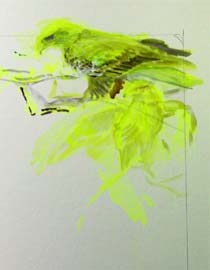
30 Jun Map #7 Paintings: All done but the tweaking!
June 20, 2011 from Seattle. Updated August 10, 2011
Below is the beginning, if it works, of the upper right quadrant of the seventh and last Birding Trail Maps of Washington State. This map will cover the trough of Western Washington from Pierce and Kitsap Counties north all the way to the San Juans. I’m given a list of birds and a map with empty spaces in it to put the birds in. By putting the painting on the website, I’ll give the folks involved with the map, including Grand Jefe Christi Norman and Designer Al Tietjen, as well as anyone who is interested, a chance to spot problems before they become difficult.
July 9, 2011. I had to go back to Pennsylvania after a terrible family tragedy that will impoverish and sadden my life for the rest of my days; to focus only on the effect on my own life, or else I’d be further along.
May 11, 2011 . I might have to make the Kingfisher smaller. And turn the Greater Yellow Gull into a Thayer’s and the Lesser Yellow Gull into a Mew.
July 13, 2011. Timeline is tight this time. I wonder if I should try to put a landscape in anywhere–like Eagle Harbor and the Olympics or something.
July 13, 2011. This is the beginning of the Southeast quadrant. Not off to as good a start as the NE quad. The Pelagic Cormorant (bird at top right) came up in conversation on tweeters, the NW birding chatline. Dennis Paulsen said something to the effect that “I’m convinced the average birder has no idea what a glamorous bird the Pelagic Cormorant is in breeding season.” I have to admit I didn’t and when we saw a group of them at a distance in Kitsap this year their flamboyant appearance had us completely confused for a while.
July 16, 2011. South East Quadrant. American Bittern isn’t working very well.
July 21, 2011. Northeast of Map.
July 21, 2011. Southeast of map.
August 1, 2011. I’ve been down in New Mexico where I couldn’t work on the eastern side of the map, they wouldn’t fit in the suitcase. So I tried to finish the four smaller paintings that go on the west and south of the map. This is one of the required birds, a White-tailed Ptarmigan, a bird that wants to be painted with scenery rather than other birds.
This is for the Northwest of the map and it’s what I’m most worried about at the moment.
This image will cross the bottom of the map, and I’m worried about it also. The Red-necked Grebe is not a required bird but an optional bird.
Southwest of map here. Neither of these birds are required, both optional, and it didn’t take too long for me to realize that a Pacific Wren is a hard bird to paint. It has lots of indistinct markings, but absolutely none that are definitive and it’s mostly one color, always difficult. But I thought two land birds, the Pileated Woodpecker and the Wren, would help balance all the water birds.
August 3, 2011. North east again.
August 10, 2011. Took all the map paintings in to Ken Wagner on Monday and here is the Northeast quadrant painting. The Eagle and Red-tail are the crucial birds in the whole scheme, if they are weak, there’s no succeeding.
SE Quadrant, near final.
NW quadrant.
Center of left side, White-tailed Ptarmigan.
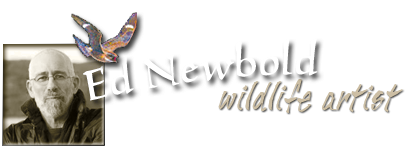
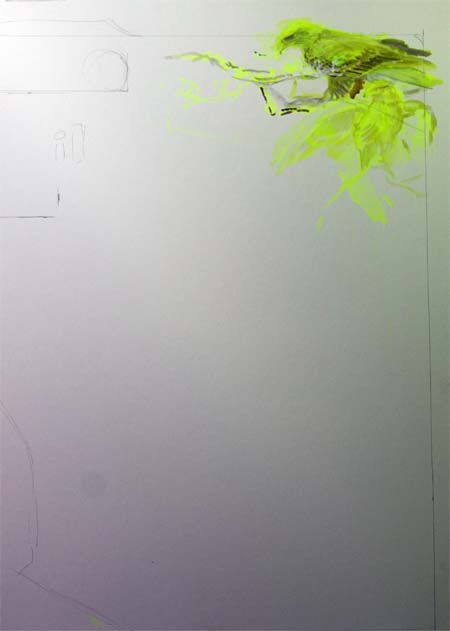
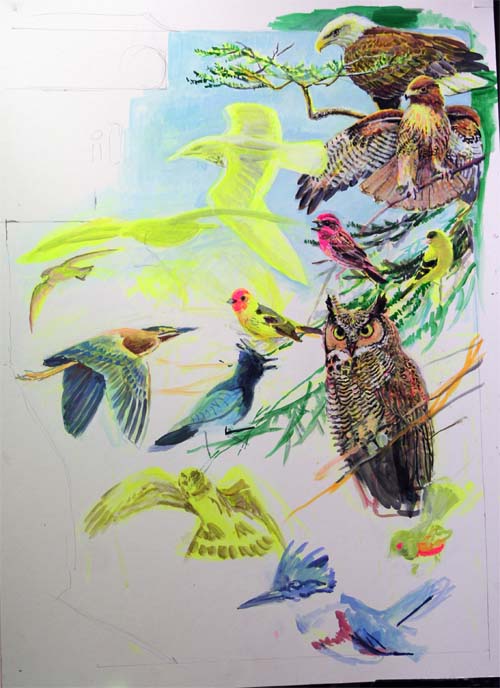
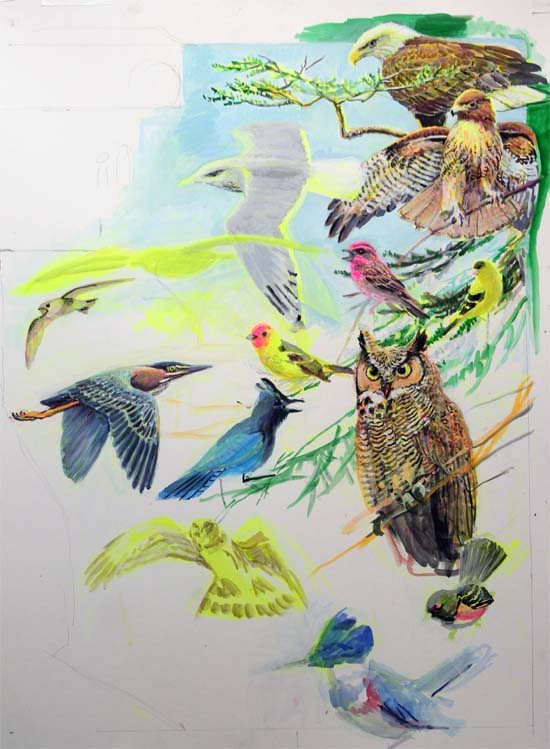
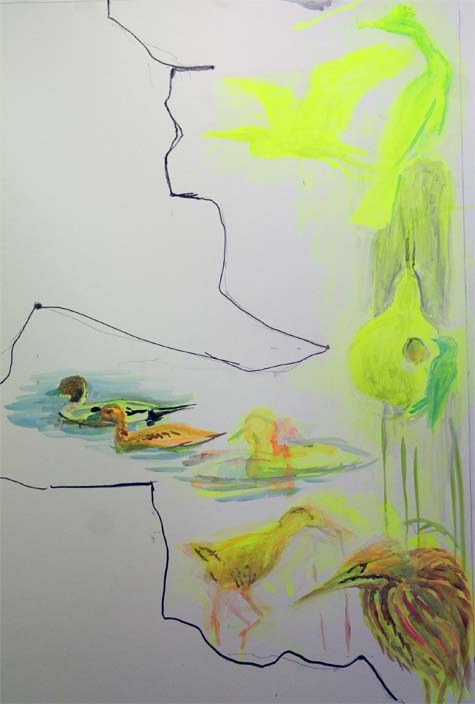
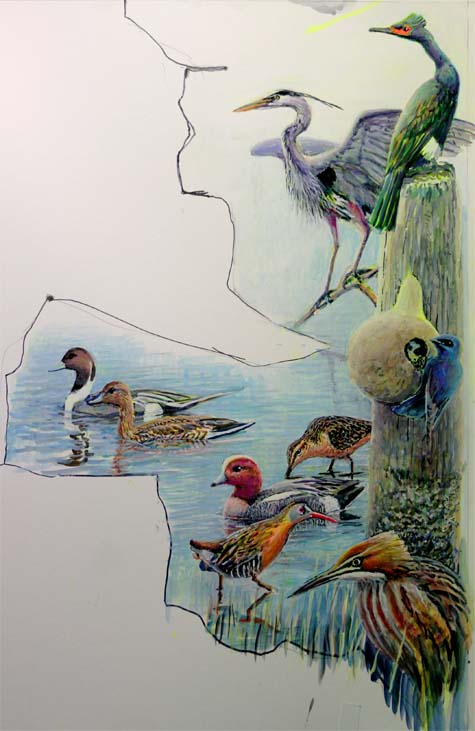
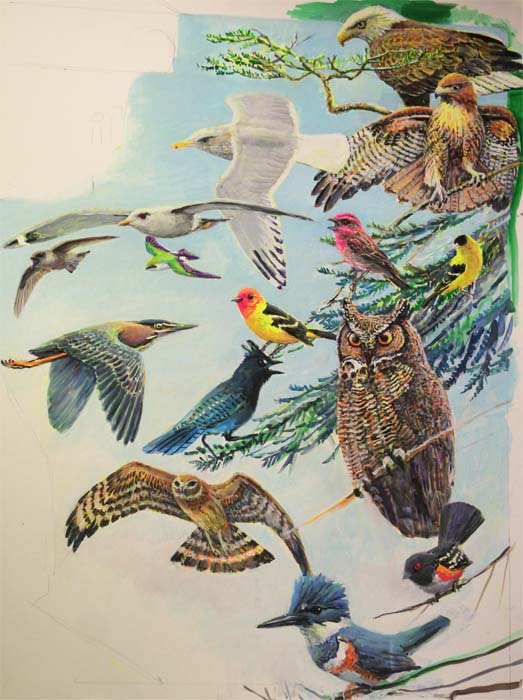
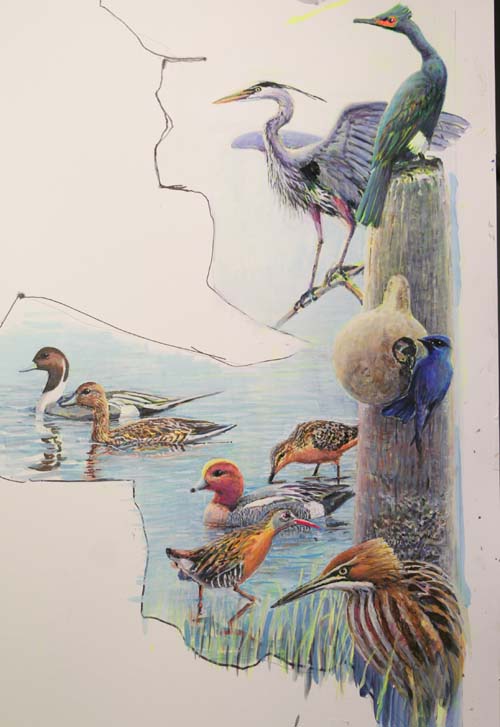
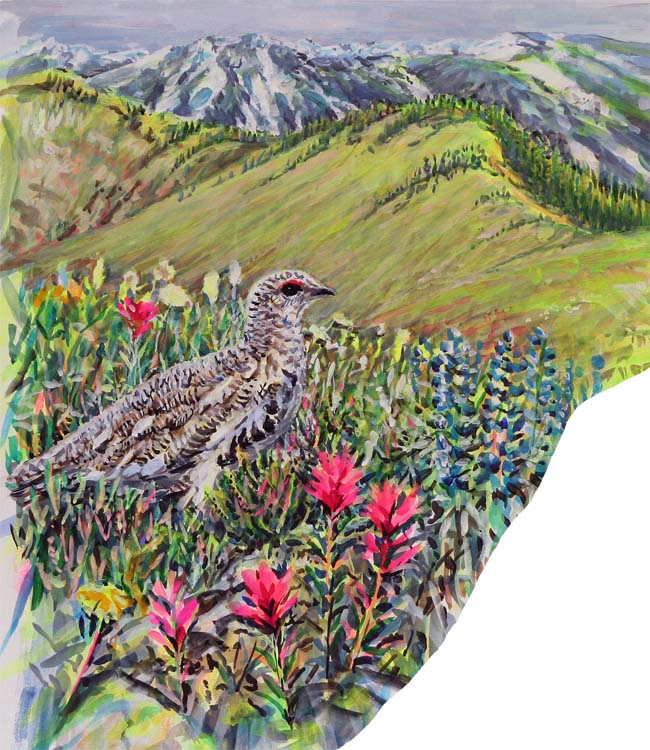
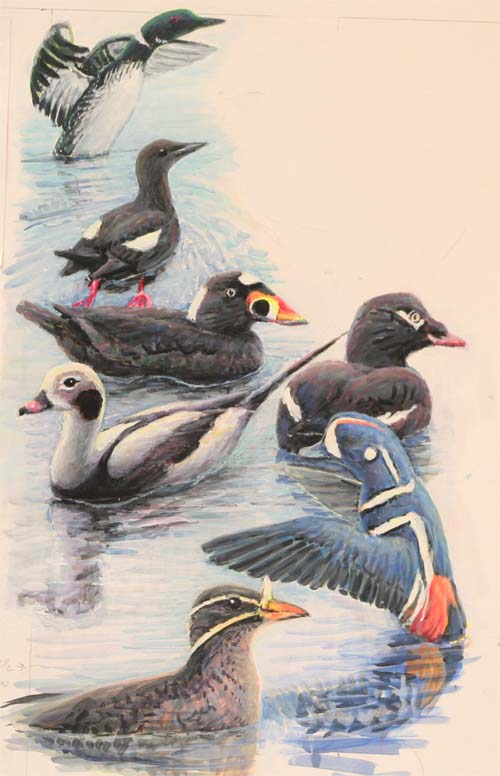
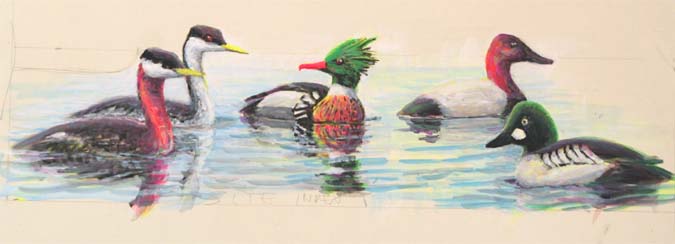
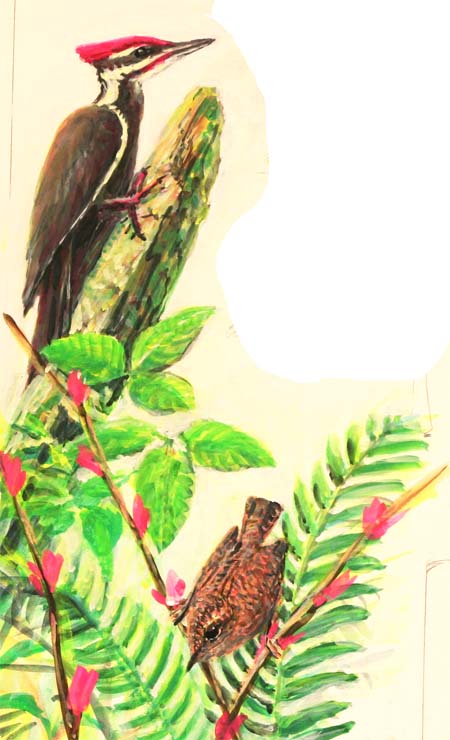
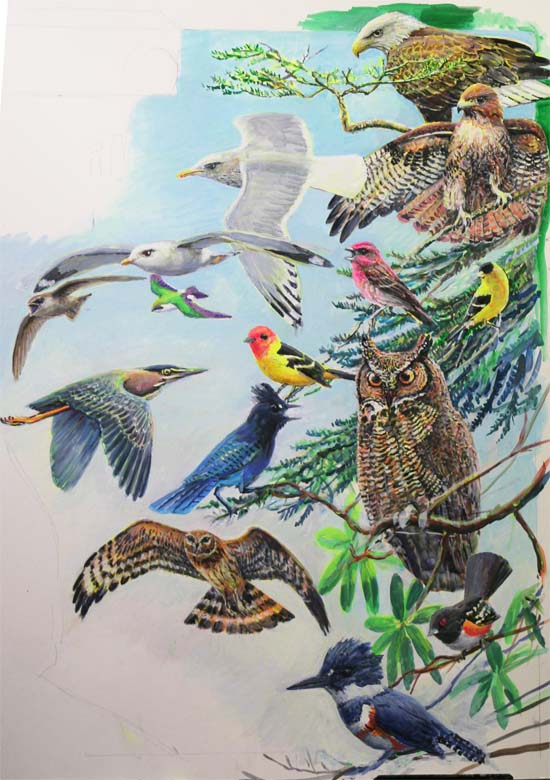
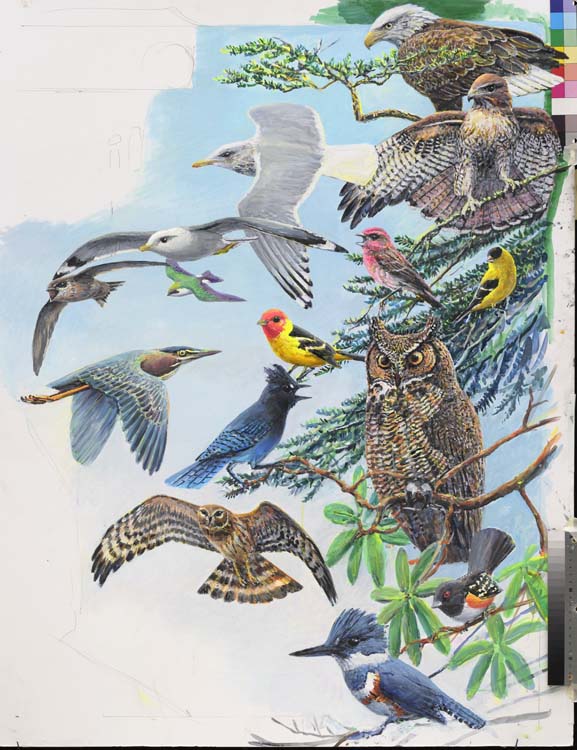
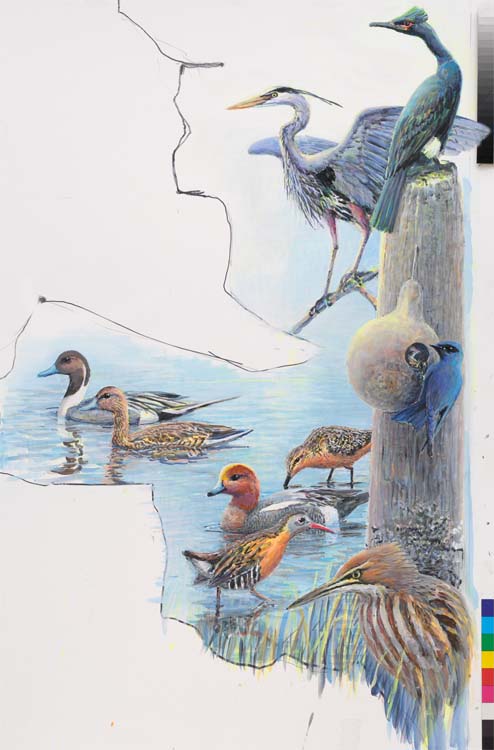
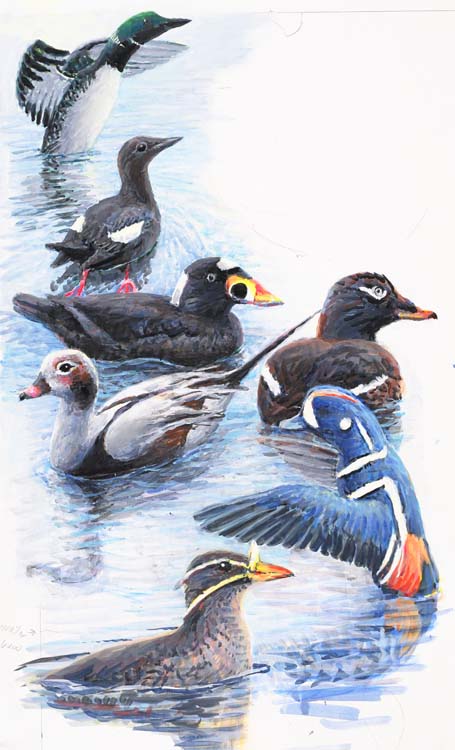
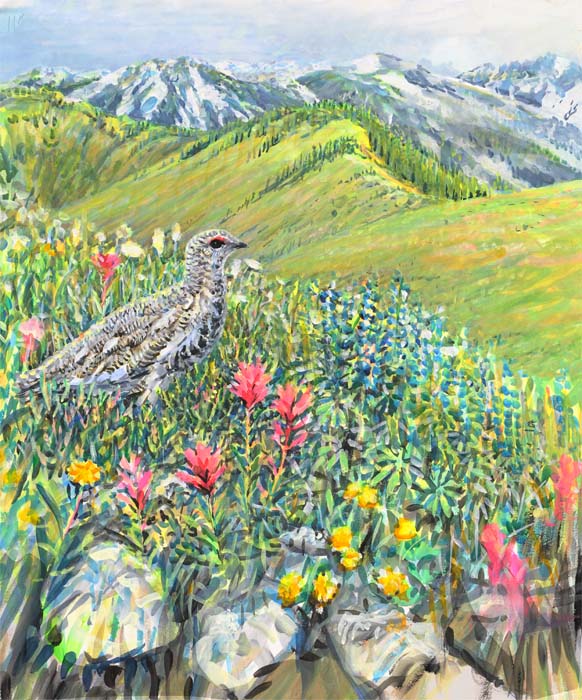
Gail Roberts
Posted at 22:32h, 05 AugustHi Ed! Gail from Leav. Bird Fest here! I love these birding trail maps. The one you are working on will be spectacular! (as are all of them!) Can’t wait to see the finished product!
Grace
Posted at 01:22h, 06 AugustThanks Ed for sharing your images ‘in process’. This is so neat to view. It’s looking great!
EdNewbold
Posted at 05:51h, 06 AugustThanks Carol,
There is a Vaux’s Swift in there, under the right wing of the Mew Gull, kind of hidden and small. I have a hard time painting Swifts, esp. Vaux’s and Chimney, partly because I don’t come across many photos to see what they actually look like in flight. I’ll put some extra effort into painting on it in the next couple days and then maybe Al will move it to highlight it more in the final layout.
EdNewbold
Posted at 18:34h, 06 AugustHi Diane,
Thanks! I might try and paint a Barrow’s this weekend and see if Al can fit it in somewhere. It’s so characteristic of this area.
Best,
Ed